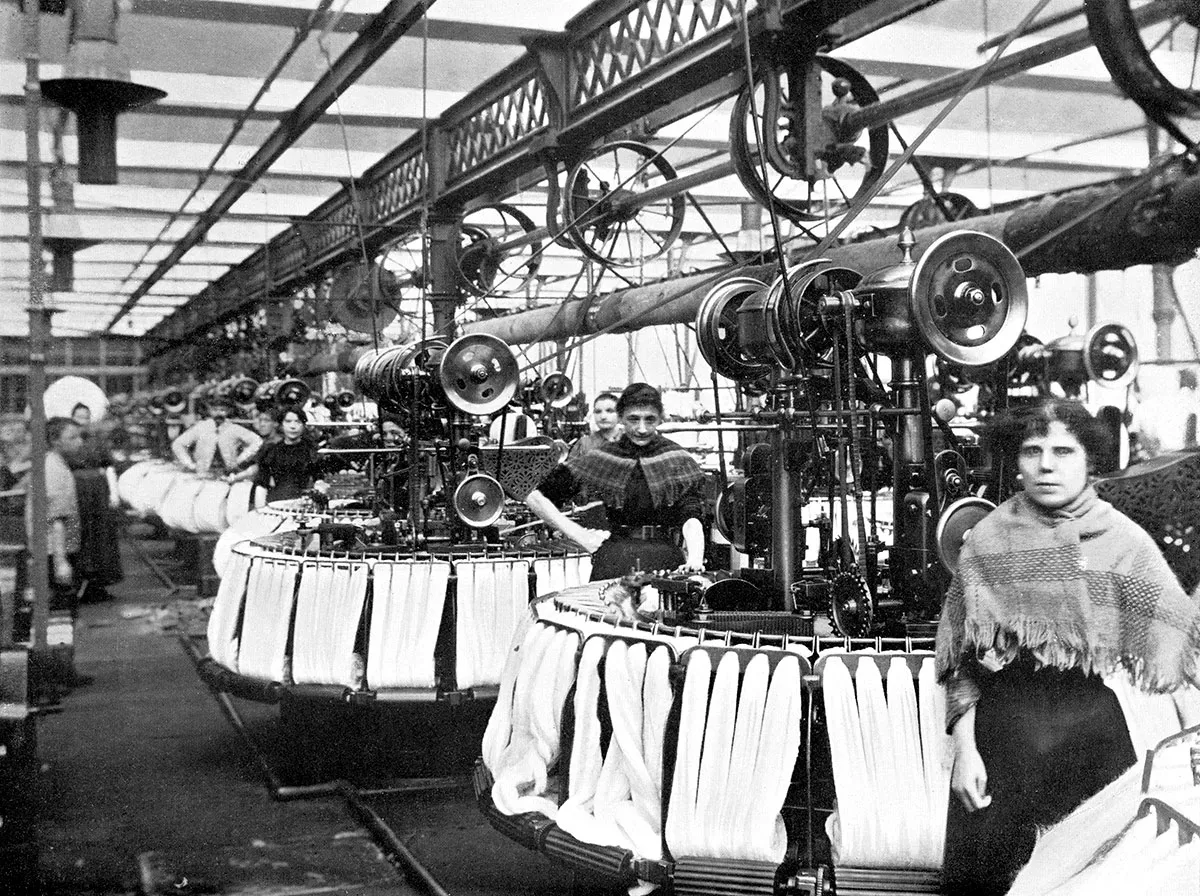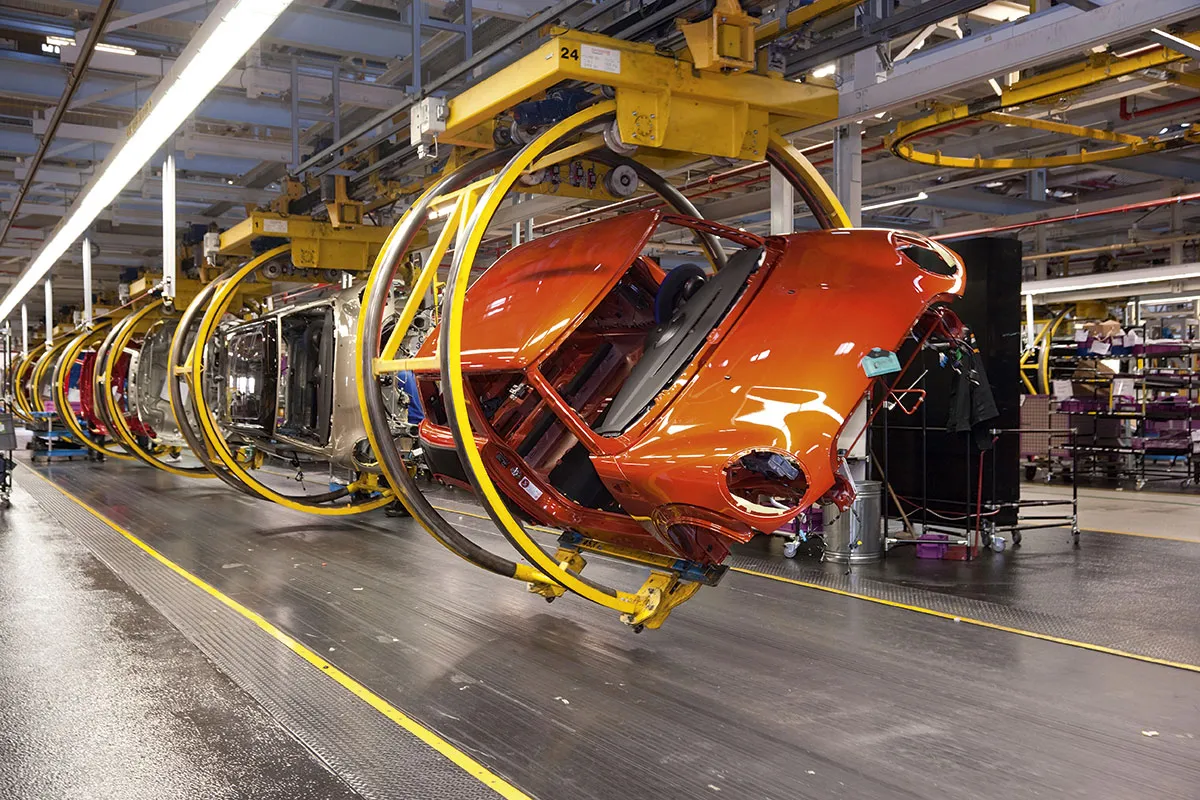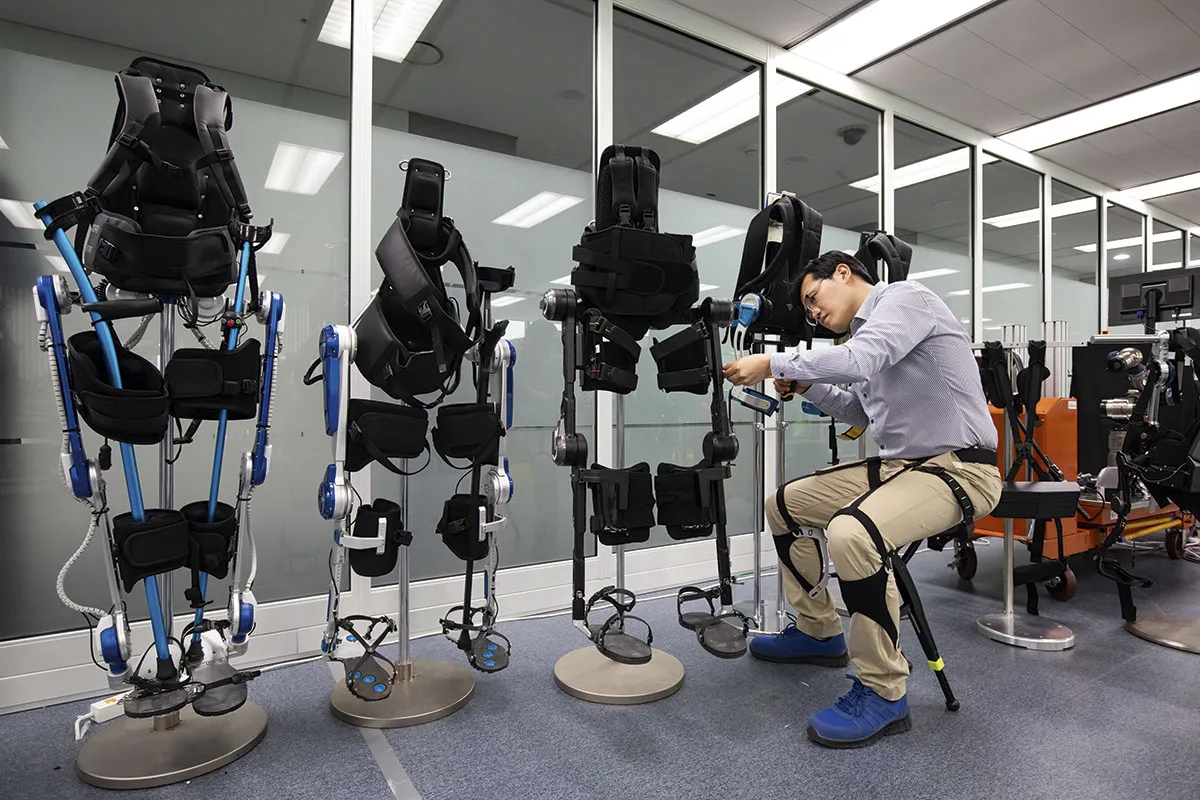For years, writers, scientists and entrepreneurs have shown us visions of our future relationships with computers and robots. These vary from the devastation of autonomous robots annihilating us, to the marvels of superhuman enhancement in robot suits. While the Terminator and Iron Man concepts push those ideas to the extreme, they highlight a clear choice in our use of technology.
Should we aim for total automation with the target of greater safety and higher efficiency? Or should we aspire to augmentation – using technology to enhance our abilities without replacing us? As artificial intelligence and robotics mature enough to become integrated into everyday life, we need to start making this choice. We need to choose wisely, or we might just automate ourselves and the natural world out of existence.
Humans have always been fascinated by automation. Centuries ago, mechanical creations called automatons were constructed to mimic musicians playing, birds singing, or animals moving. Much of the Industrial Revolution was premised on the idea that automation is better: fabrics could be woven faster and cheaper. Never mind the pollution or the awful working conditions – the products are so much more affordable!
The idea continues in our factories today, where everything that can be automated is automated. Car factories are the largest adopters of robots, and today all welding and painting is done by robots, with ambitions for entire vehicles to soon be built automatically.
And while robots have been around for several decades, the last 10 years have seen an explosion in artificial intelligence (and specifically methods such as machine learning). These advanced computer algorithms inspired by the way the brain works provide the latest way we can perform automation.

Automating or assisting?
We can use artificial intelligence to drive our vehicles, to design products, even to compose music or make art. Artificial intelligence will soon be able to imitate our images and sounds perfectly, meaning that actors and performers can be computer-generated. Artificial intelligence can generate text in any style and content, so writing can be automated. It can understand our patterns of behaviour and influence us automatically – enabling the marketeers’ dream of encouraging us to purchase or vote in ways we otherwise might not.
While automation is a commonly touted goal by those developing such technologies, it takes a certain genius to imagine something better. Instead of an artificial intelligence, the idea of augmenting our own intelligence with technology was first proposed in 1960 by an American psychologist and computer scientist called Joseph Carl Robnett Licklider, in an important article titled ‘Man-computer symbiosis’.
Licklider went on to help create the modern computing world as we know it, from the ARPANET (which later became the internet) to graphical user interfaces. His ideas were revolutionary, for he believed that the new computer technology should be used for ‘intelligence amplification’ – not automation.
His influence was vast and as computer technologies grew more advanced, most software was created to amplify our abilities. A word processor helps us write better, it doesn’t write for us. A computer-aided design (CAD) package helps us design, it doesn’t create designs for us. Likewise in our vehicles, technologies now exist to help us park, avoid collisions and keep us safe. The whole philosophy of augmented intelligence is to put humans first, and technology second.
And here’s where we hit the turning point in history. Those who favour automation are increasingly squeezing the augmented intelligence solutions out. We’ve now got the technology to do it, so why not?
If my word processor can check spelling and grammar, why not let it reword the whole sentence? Or write the entire piece? If my car can avoid a collision, why not let it drive? If my art package can blur the background of an image, why not let it create a new background? Or a new image? If my medical software can suggest drugs, why not let it diagnose and treat me? Those who favour automation always use the same arguments: it’s cheaper, more efficient, faster and better. But do these arguments always hold water?
Read more about artificial intelligence:
- Artificial intelligence quietly relies on workers earning $2 per hour
- Why there won't be a robot uprising any time soon
People first, technology second
When we fully automate systems, we put technology first and humans second. A fully automated factory is designed to make the robots work optimally, not necessarily to be safe or comfortable for human workers.
In the early days of Tesla, worker injuries were common. Elon Musk’s solution? Automate further and remove the humans. “You really can’t have people in the production line itself. Otherwise you’ll automatically drop to people speed,” Musk told his investors in 2016. “There’s still a lot of people at the factory, but what they’re doing is maintaining the machines, upgrading them, dealing with anomalies. But in the production process itself there essentially would be no people.”
It’s a classic geek dream, but it ignores the fact that customers are increasingly looking for customised options on their vehicles, making their manufacture increasingly difficult to automate.
People are the most flexible and adaptive part of any factory, so instead of trying to replace them with difficult-to-program and complex robots, perhaps it would make more sense to enhance the capabilities of experienced workers with robotic tools that they can control, combining the speed and efficiency of robots with the adaptability of people. The latest exoskeleton robotic suits from ULS Robotics provide exactly this solution – Ford and Hyundai are trialling such suits at the moment.

Research is also casting doubt on the idea of fully autonomous vehicles. Turn your car into a robot and you have to make the roads fit the cars first, and people second. Autonomous cars won’t understand pedestrians. They won’t have that human connection between the driver and someone crossing the street, the subtle body language that says, “I’m crossing now” and “I’ve seen you, go ahead.”
They won’t understand the strange contortions and undulations of Asian or European country roads under (increasingly) extreme weather conditions, or the changing fashions and products that make driving such a varied experience. So we must regularise all roads to make them fit the cars, spending a fortune on upgrading infrastructure. We must standardise all interactions between people and vehicles. We must change our environment to fit the needs of our robots, putting the robots first and the people second.
There are even warnings that autonomous vehicles may not reduce traffic. A recent study suggested that personally owned autonomous vehicles can result in more traffic as the empty cars shuttle to pick up their owners (or even pick up packages from stores), and one way to avoid parking charges is to tell your vehicle to keep driving around. Car-pooling may be a solution to these problems – but in the age of global pandemics, it’s unlikely to be a popular solution.
Autonomous vehicles even have problems when we’re behind the wheel – research shows we struggle to transition from autonomous modes to manual, and our driving skills will only deteriorate as we drive less, making us more dangerous on the roads.
But everything changes if we put people first. Instead of aiming for fully autonomous vehicles, why not aim for superhuman drivers? Technology that makes drivers better, safer, more aware and makes the task of driving more engaging?
The same artificial intelligence tech used in autonomous vehicles can be used to achieve this, providing drivers with more multisensory feedback. See the accident two miles away on a heads-up windscreen display long before your eyes could. Be alerted to invisible black ice on the road. See the cyclist dressed in black on a dark country road with no lights. Be warned by tactile feedback on the accelerator that there’s a collision risk to give you time to respond, rather than have a frightening last-second automatic braking system.
No more blind spots, as your car will be able to see all around itself and show you exactly what’s going on. No more falling asleep or drunk driving as the car can keep an eye on you and ensure you’re fit to drive. New augmented-reality technology is becoming available to make windscreen displays feasible, and this use of artificial intelligence is a lot safer and more reliable than attempting to have it drive cars. Why shouldn’t our technology make us better at driving, rather than worse?

Enhance, not replace
Artificial intelligence can, in theory, enable us to replace all actors, singers, musicians and composers. But while this might be cheaper than paying their salaries, it’s putting the technology before the people. Wouldn’t it be better to ensure that all our art is created by artists, but that those artists have high-tech tools to help them create their works?
Don’t automate the painting; provide the artist with a new kind of medium to work with. Don’t replace the actor or disguise her skill through post-production; give her the ability to fine-tune her image as she performs, digitally altering her appearance and sound to suit her performance.
Artificial intelligence can already design for us automatically. It can do everything from creating radical new architecture from scratch, to optimising angles on wind turbine blades. But CAD company Autodesk has no intention of taking choice away from its designers. According to Tonya Custis, the director of artificial intelligence research at Autodesk, “Autodesk’s mission is to amplify designers’ creativity by using artificial intelligence to assist them with the tedious, routine and constraint-based aspects of their work so they have more time to focus on the art of designing.”
For example, generative design solutions created by artificial intelligence are suggested as ideas for designers to examine and modify, and artificial intelligence modelling tools show designers exactly how the designs will behave, giving designers greater power, creativity and precision.
The misuse of some artificial intelligence methods has already caused major problems. Automated news curation has been designed to feed us more of the things we like, and sometimes prioritises messages that are more likely to cause upset, such as Facebook’s automatic policy that prioritises messages that provoked bigger reactions. These automated learning systems result in our societies polarising around certain views, leading to radicalisation and distortions in the democratic process.
There are similar problems when automated systems are used to make judgements classifying faces, with discrimination being embedded within the software. Again, this is technology first, people second. Decisions that may affect people should be made by people. Why would we delegate our choices to machines? Isn’t this removing one of our fundamental freedoms?
The use of augmented intelligence enables people to make these decisions in a safer and more informed manner. Instead of automated news curation, artificial intelligence can be used to present us with a balanced choice of different topics and opinions. Feeding a child nothing but sweets and ice cream makes for an unhealthy child; give them a varied selection to form a balanced diet and they become healthy and strong. Similarly, if we use artificial intelligence to help provide varied and balanced online media content, then the minds and education of populations become healthy and strong.
And instead of using artificial intelligence to manipulate the minds of voters, use it to provide coherent summaries of what voters are demanding to politicians and enable our elected representatives to represent their constituencies more effectively. This is how artificial intelligence can make us better.
Artificial intelligence is also used to feed addictive habits in gaming. Computer games (like much of social media) are designed to hold your attention for as long as possible, by any means necessary. It’s resulted in a new epidemic of unhealthy children and adults. In China, a new law is attempting to tackle this ‘spiritual opium’ by limiting gaming to three hours a week for people under the age of 18.

But the same technologies can be used for good, as shown by the use of artificial intelligence in education. Using the techniques in games that encourage players to keep playing, Third Space Learning aims to monitor student reactions in real-time and provide hints to the educator so that they can adjust their pace and style to suit the needs of their class.
A leading panel of artificial intelligence experts at Stanford believes this is the future of teaching: “Over the next 15 years … the use of intelligent tutors and other artificial intelligence technologies to assist teachers in the classroom and in the home is likely to expand significantly.”
So how do we change things? The first point is to recognise that artificial intelligence and robots aren’t evil or inherently bad technologies, any more than were the machines of the Industrial Revolution. When misused for poorly conceived automation, often in the name of efficiency improvements, profitability, or even safety, they cause great harm. But when applied for the good of people, these new, advanced technologies have the power to make us better than we have ever been.
Dumb automation is for the short-sighted. Augment your intelligence – use tech to make you better at what you do. The trick is to be aware that what you use will change you. So use solutions that put people first, solutions that enable you to make your own, more informed, decisions. Don’t be a victim of bad tech. Choose technologies that make you a superhuman.
- This article first appeared inissue 372ofBBC Science Focus Magazine–find out how to subscribe here
Read more about future technology:

